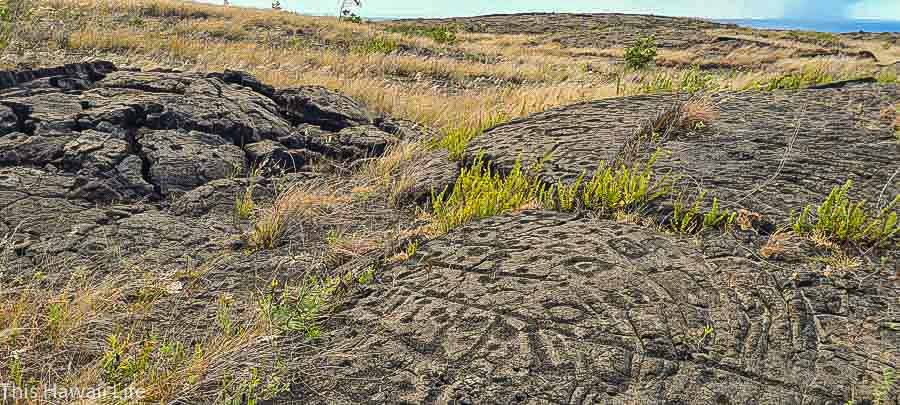
Visit to Pu’u Loa Petroglyphs at Volcanoes National Park
A visit to Pu’u loa Petroglyphs at Volcanoes National Park feels like going back to Hawaiian ancient history come alive. The trail leading up to the petroglyphs located in the lower part of the park is short with rolling hills and gorgeous views of the coastline and coastal mountains in the background. Once you approach the site, you’ll be astounded by all the thousands of petroglyphs representing individual families that make pilgrimages to this site as a rite to their newly born child and wishes for a healthy and long-life time for the new infant.
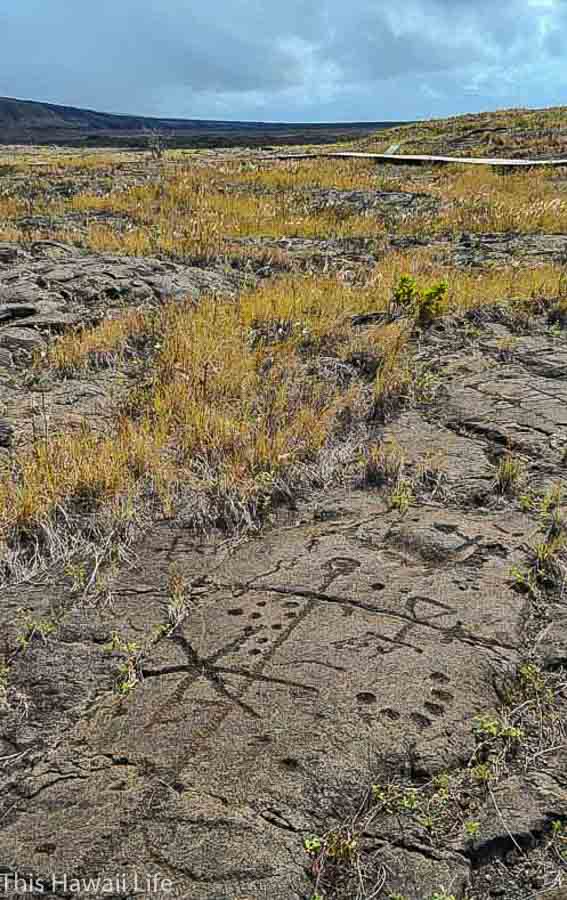
How to get to the Pu’u Loa Petroglyphs
The Pu’u Loa Petroglyphs located in Volcanoes National Park is located in the southern part of the park. Once pass the entry gate to the park, make a left entering the Chain of Craters Road and follow it directly to the parking lot and adjacent trailhead map. Follow the Chain of Craters down this scenic route approximately 16.3 miles from the start of the Crater’s Road to mile marker 16 and look for the pullout parking spots and cross the road to the trailhead start.
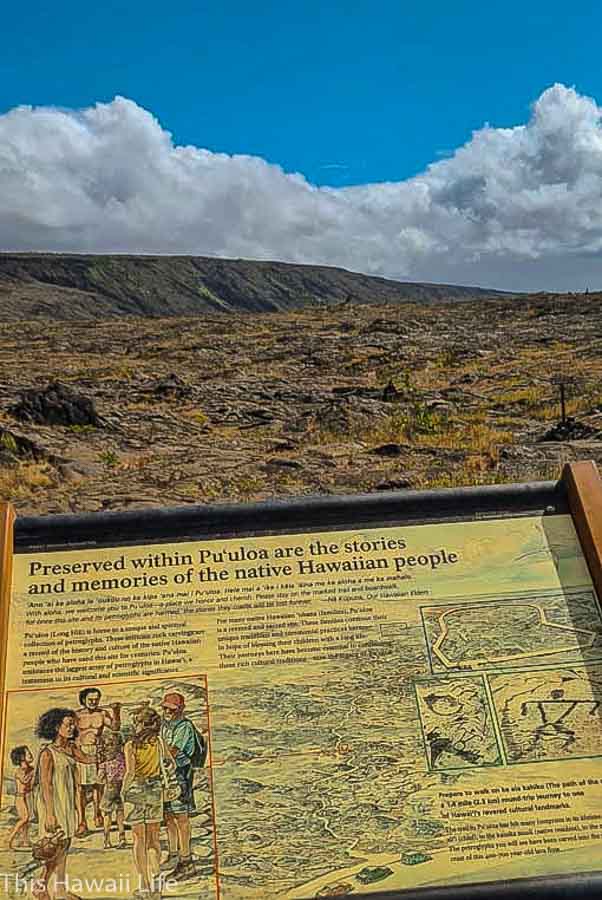
What to bring
The area is exposed with no trees or shelter and has variable weather. Bring water, sunscreen, hat and hiking shoes. Also, a rain jacket for occasional rain in the area.
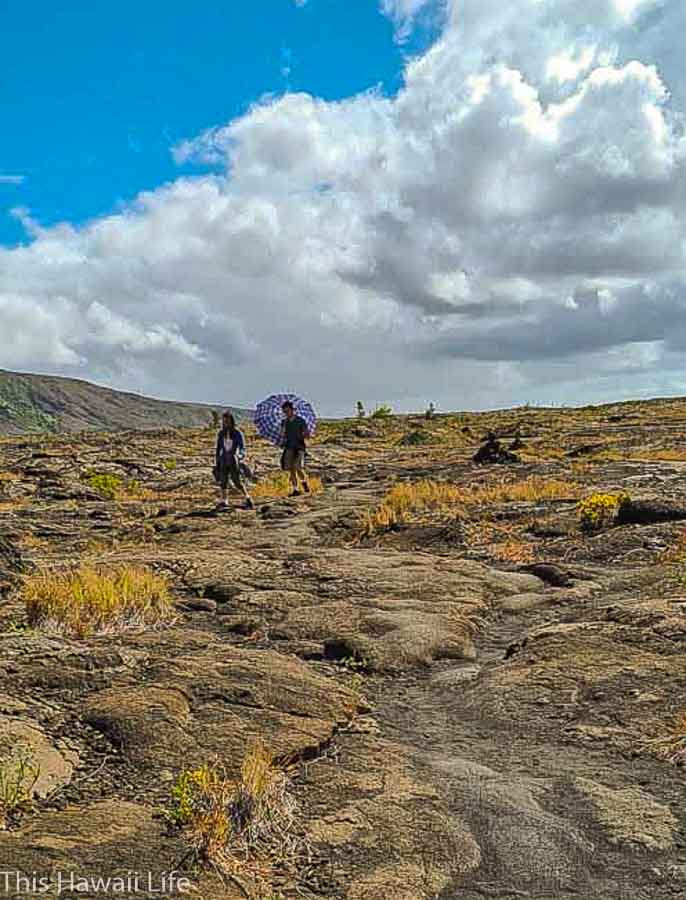
Trail head start
Across from the parking is the trail head start and interesting information about the history and importance of the area. The trail is less than 1.4 miles roundtrip and about ½ hour to hike in one direction. Mostly rolling small hills or Pahoehoe lava rock and gravel. It is easy to follow signs and rock stacks to the end where the petroglyphs are located. The best time to visit is late in the afternoon when the shadows from the afternoon sun make the petroglyphs stand out better.
Towards the end of the trail, you’ll see a wooden boardwalk that you should stay on and protects the fragile and shallow petroglyphs in the area. Please remember that this area is sacred grounds and very fragile so do stay on the boardwalk and not wander around the rest of the area until you get back to the start of the trail to head back to the parking lot.
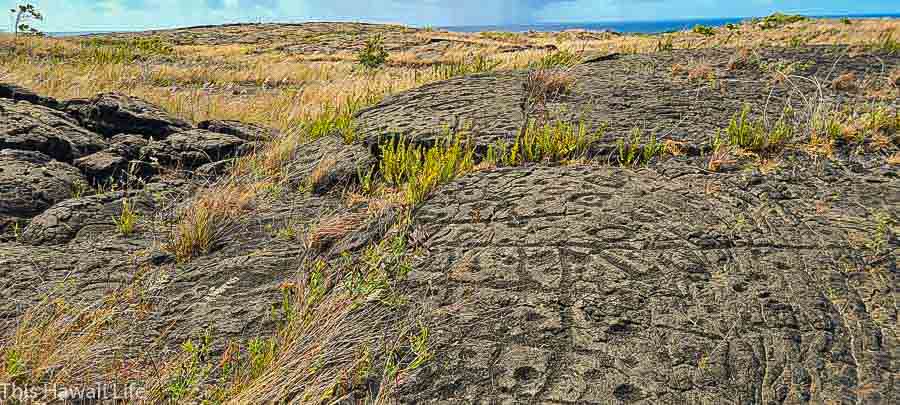
What to see and the meaning of Pu’u Loa
Stay on the board walk area and soon you’ll notice all the shallow petroglyphs come into view. These petroglyphs are called Kii Pohaku – carved images onto the lava stone of petroglyphs (the smoother and hardened pahoehoe lava is what the natives typically were able to carve on these flatter rock areas. The petroglyph carvings range from simple circles to double circles and more stick figures and other symbols of people, animals and other geometric designed images. Created from the 13th century to the 15th century, the carvings represent each family member what would do the carvings.

The most common are the holes and circles which typically are the holes carved into the rock where the newborn children’s piki or piece of umbilical cord would be buried to represent each child and to hope for a healthy long life at Pu’u Loa meaning hill of long life. Other images you might see are basic stick figures, feathered cape designs, canoe sails and other geometric patterns like lines, zig zags or concentric ring patterns representing different numbers in party and visits around the island to this special spot.
The carvings were made with stone hatchets or solid rock that could carve into the hardened lava rock.
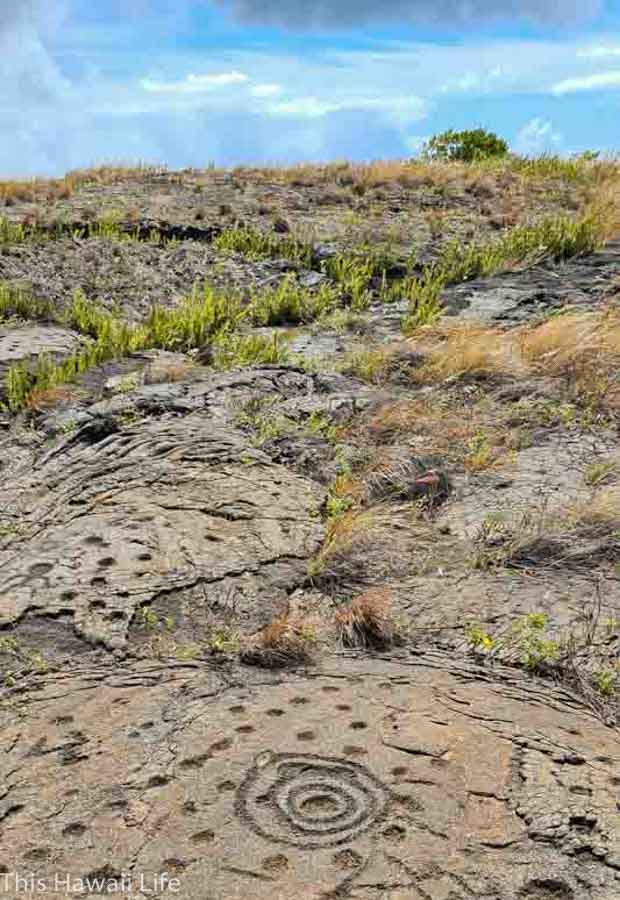
The common petroglyph design
You’ll see thousands of these holes and circles representing the thousands of native Hawaiian children and early generations that visited the area. The holes or puka comprise of about 85 percent of the engravings on this hilly area of Pu’u Loa connecting each child with the aina or land that they will be growing up in and prayers for a very long and healthy life ahead filled with so much potential.
There are over 23,000 petroglyphs at this site in Volcanoes National Park, making it the largest petroglyph area in all of Hawaii. Find out more about Petroglyphs around Hawaii here for more background, locations and the major areas to visit in each island.
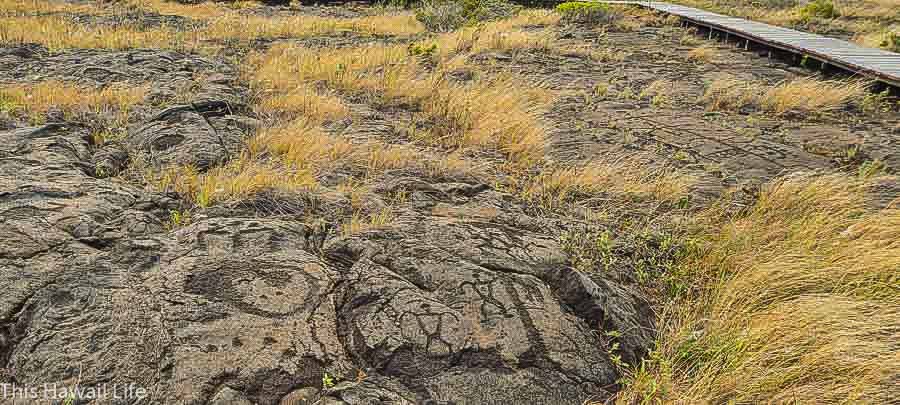
Interpretations of the petroglyphs
Noted anthropologist, Martha Beckwith visited Pu’u Loa in 1914 and made some initial observations and research into the carvings which loosely were interpreted below:
A dot in the hole represents a child
A dot in a circle represents a hole for the first born
A dot with two circles represents born of an ali’I (a Hawaiian ruler)
A plain calabash represents a calabash
A jagged line represents a mo’o lizard
A circle with a long line is a Poloulou or a native stick carried by an ali’I and covered with a tapa ball and used to symbolize a taboo
A cross with a dot on each end represents a cross before a chief traveling at night
These beautiful petroglyphs represent that purpose of recording travel around the island and also to express and hope for good health and longevity to a newborn
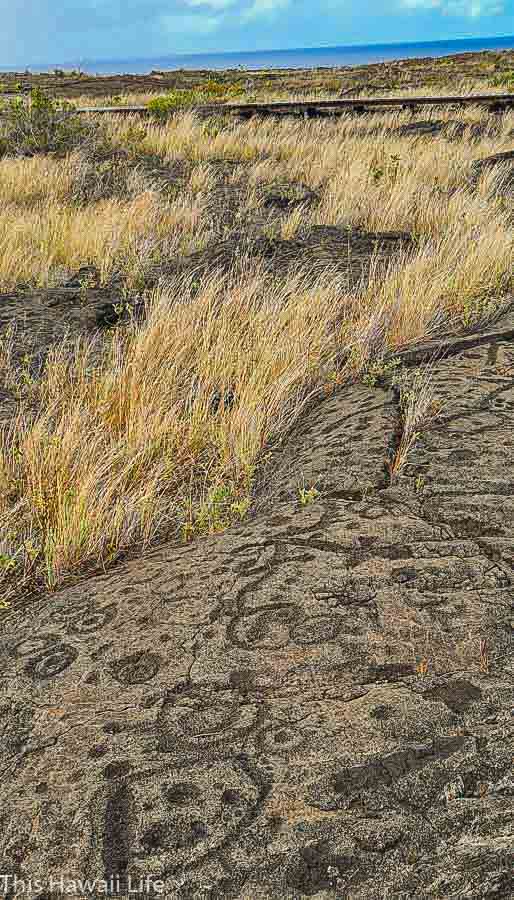
Notes to visiting
Please do not do your own carvings or create any rock walls in the area.
Stay on the boardwalk area only to do the short loop experience.
To learn more about the area and petroglyphs check out this website here for more details.
There is a call box at the parking area but no other services but restrooms nearby at the end of Chain of Craters road.
Other places to visit around Volcanoes National Park and surrounding area
Visit Nahuku Thurston Lava tube
Explore Volcano Village in Puna
Lava eruptions at Volcanoes National Park
Why you should visit Volcanoes National Park now
Exploring the Puna district in Hawaii
Visiting Naalehu in the Kau district
Where to stay around Volcanoes National Park
There is camping and limited cabin stays in the park, but there are more inns and Air Bnb locations close by in Volcano Village. Most of the stays at the village are at small mom and pop inns and Air Bnbs or private home rentals. Check out the best reviewed sites here.
Aloha Junction Bed and Breakfast – well located in the village in an old plantation home with nice comfortable rooms, great service and breakfast
Hale Ohia Cottages – a classic home and bed and breakfast with gorgeous grounds, cottages and service in the village
Aloha Crater Lodge – located close to the park within a lush rainforest, cozy, peaceful, comfortable and priced well for the area.
Check out these top reviewed hotels on Trip Advisor here for more details, availability and prices.

Have you been to the petroglyph fields at Pu’u Loa?
Please share your thoughts and other recommendations in the comments below with your recommendations.
Thanks for visiting today and checking out this post on Visit to Pu’u Loa Petroglyphs. I hope you are inspired to plan a visit and enjoy these wonderful attractions. If you enjoyed the images and post, could you please share it with any of the social media buttons located around the post.
Disclosure – this post on a Visit to Pu’u Loa Petroglyphs may have affiliate related links to brand offers which helps our site keep operating – we appreciate any purchases through this link and your supporting This Hawaii Life.

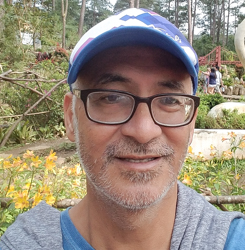
0 Comments
Trackbacks/Pingbacks